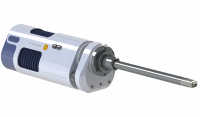EDX / EBSD
What are the main differences between EBSD and EDX analysis?
Electron Backscatter Diffraction (EBSD) analysis and Energy Dispersive X-ray Spectrometer (EDX) analysis are two methods for the microstructural characterisation of crystalline materials based on the diffraction of radiation at crystalline planes.
They are used to measure the crystallographic orientation of grains, grain size and shape, texture, defects and phases present in a sample.
The main difference between the two techniques is the type of radiation used: electrons for EBSD and X-rays for EDX.
What is EDX?
EDX (Energy Dispersive X-ray Spectrometer) is an elemental and compositional analysis technique based on the information provided by X-rays generated by electron irradiation. When a vacancy is created in the electron orbital of the inner shell of an atom by an incident electron, electrons with a higher electron level are transferred from the outer shell to stabilise the atom.
The X-rays emitted in this process are known as characteristic X-rays and have a specific energy value for each element. Based on the energy of the characteristic X-rays obtained, the presence of the elements (4Be to 98Cf) in the sample can be determined in a few seconds (qualitative analysis). The intensity of the characteristic X-rays can also be used to measure the content of the individual elements (quantitative analysis) and to analyse the segregation within the field of view (X-ray mapping).
What is EBSD?
EBSD is a material characterisation technique based on the scanning electron microscope (SEM). In EBSD, the electron beam is scanned across the surface of a tilted crystalline sample; the diffracted electrons form a pattern at each point that can be captured and analysed using special hardware and software. At each point, the indexing process provides information about the phase and crystallographic orientation from which the microstructure can be effectively reconstructed. This enables a complete characterisation of the microstructural properties of the sample. EBSD is now fast and fully automated, making it a powerful tool in many industrial and research fields, as shown in the table below.
Do you need advice or further information?
We offer you the entire EDX and EBSD range from Oxford Instruments and cover the entire product support from sales, installation and service to training and application support.
Like our customers, we are convinced of the products and the experiences show stable and trustworthy results which are achieved with a user-friendly software in an uncomplicated way.
Contact us:
info@gloorinstruments.ch I 044 940 99 55

